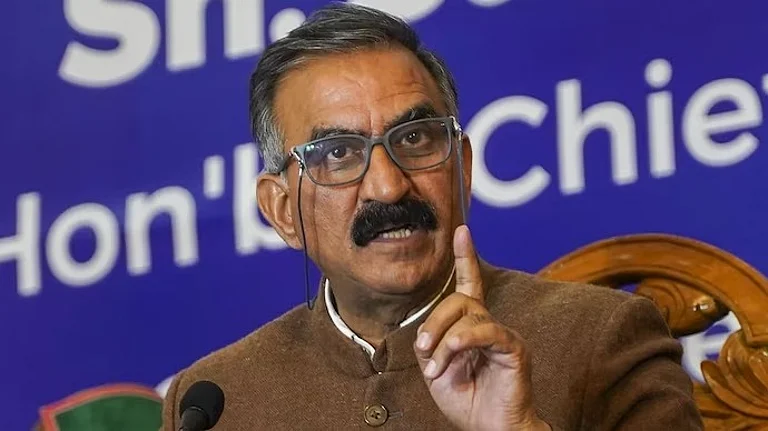Barter system is the oldest form of commerce in the world that has almost vanished with time but still has very limited existence in the corporate world and international trade. In an informal level, any two parties or individuals can obviously barter their goods or services on their own will but, a formal market for barter system is nowhere in the world except the state of Assam in India.
Reserve Bank of India (RBI) officially put an end to the barter system of trading on December 1, 2015. But in Assam of the Northeast India, there is a mela or fare held in mid-January every year in the district of Marigaon, where the traders from the hills and plains meet and exchange their products through Barter system. This fare’s name is Jonbeel mela, the word Jonbeel being derived from two words- ‘jon’ meaning moon, and ‘beel’ meaning a large water body, as it is said that the shape of that water body was like the curved moon. It is a three-day annual indigenous Tiwa tribe fair, coincidentally held on the weekend of Magh Bihu - the harvest festival of Assam. The venue of the fare is a historic place known as Dayang Belguri at Jonbeel – only 3 km from Jagiroad in Marigaon district and 65 km from Guwahati. In this year of 2024, Jonbeel mela was held on 18th, 19th and 20th of January.
Not only Assam, the entire Northeast is a land to numerous tribes and communities belonging to the hills and plains, many of which had their own dynasties in the past when the entire Northeast India was one single land known as Bor Asom consisting of the ‘seven sisters’ namely Arunachal Pradesh, Assam, Nagaland, Manipur, Mizoram, Tripura and Meghalaya. In Jonbeel mela, the different hill tribes such as Tiwa, Karbi, Khasi, Jayantiya and Garo, from the neighbouring West Karbi Anglong and Meghalaya and their counterparts from the plains, exchange their products through barter among themselves. The tribal people from the hills bring ginger, bamboo shoots, turmeric, pumpkin, medicinal herbs, etc. and exchange those with products like salt, oil, dried fish, various 'pithas' (sweet rice cakes), clothes, utensils and other items, with the people in the plain. Some other items include betel leaves, areca nuts, fresh lime, black pepper, mustard seeds, earthen-ware, iron-ware and even livestock. Nowadays, besides the barter system market in the morning time, other monetary currency-involved stalls also come to the fair.
This rarest fair of its kind was started by respected Ahom monarch Swargadeo Rudra Singha in 15th century and for more than last 500 years it is being held every year (excluding the lockdown times due to Covid-19) in the same place at the same time. The purpose of this fare was not trade alone. It also had a noble political purpose of getting tribal chiefs and communities together, so that they could stay and grow together regarding socio-political development, and grow a feeling of harmony and brotherhood. This was essential for the strong survival and socio-political growth of Bor asom together. Jonbeel mela was first organised by the Tiwa tribe, also known as Lalungs, and they still take the lead role in the entire organisation of the fair. The Tiwas name and pronounce the fair as Chunbîl Melâ.
The mela every year is started by worship in the very morning, followed by community fishing in the Jonbeel. Most interesting and enjoyable part of the fair is the Raaj Darbaar held amidst the fair. Once upon a time, the area was ruled by the Tiwa tribe; and their king was called Gobha Deoraja (Kobâ raja in Tiwa). Today also, the Jonbeel Mela is organised under the patronage of the Gobha Kingdom. Though now the monarchy system is over, still the ceremonial kings of the Tiwa tribe – the Gobha kings come to the fair, collect taxes and follow all the rituals. In the Darbar, people perform their traditional dance and music, making the environment very joyful.
The Government of Assam on 17 January 2009 announced an ‘Annual Royal Allowance’ for the 19 customary kings from communities under the Gobha Kingdom that includes parts of three districts of present Assam: Morigaon, Nagaon and Kamrup. Gobha Deoraja Deep Singh Deoraja and Ahom King Susenfa Pratap Singha expressed their delight on this decision.
This year on 18th January, Gobha king Deep Singh Deoraja hosted the flag of the mela and commenced its inauguration by following the rituals offered at Deosal Mandir. A souvenir named ‘Jonbeel’ was inaugurated in the mela field. The ages-old Rooster fight was organised. 19 traditional Tiwa Raja attended the Raj Darbaar held on January 19, as per local news. In addition, a research team from UNESCO visited the fair, interviewed the people, recognising the cultural and historical importance of this unique gathering. The fair ended at 9 PM of 20th January.
Dr Chandana Kashyap is an independent writer and journalist based in Guwahati, Assam. She occasionally writes for local newspapers in Assam.























